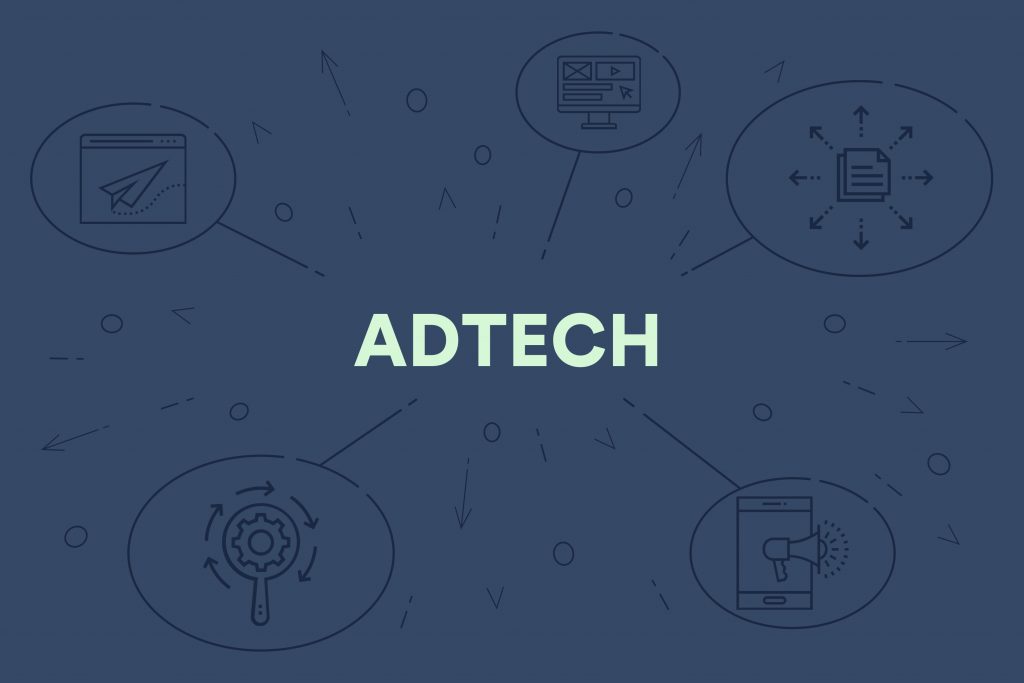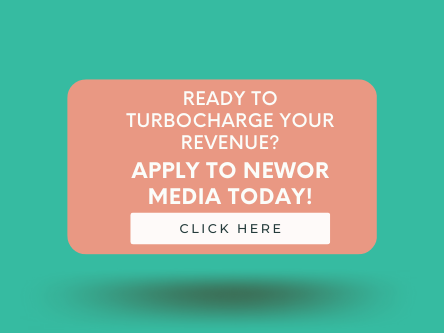
Did you know digital advertising has become increasingly complex with the emergence of new privacy regulations from Apple, Google, and GDPR? The adtech industry has also seen a dramatic shift in 2021 as the pandemic changed how people interact with media, leading to increased competition for ad space. The lockdowns led to people spending more time on streaming services such as podcasts while shopping online through e-commerce stores such as Amazon.
Despite these challenges, the adtech industry remains resilient, and there are opportunities to capitalize on the ad trends that will shape the industry in 2023. For instance, you can leverage automation, augmented reality, and predictive targeting. You can also invest in adtech solutions that optimize your campaigns and help you reach new audiences.
Keep reading to understand what adtech is and how it has changed, and discover the top adtech trends to leverage in 2023.
What is Adtech?
Adtech is the technology used to create, manage, and measure digital advertising campaigns. It includes using software, platforms, and other tools that allow brands to target specific audiences, track performance metrics, and optimize ad campaigns in real-time. That’s why adtech is derived from advertising technology.
Adtech is divided into two types of technology: demand-side platforms (DSPs) and supply-side platforms (SSPs). Advertisers use DSPs to purchase digital advertising inventory, while SSPs are used to manage and sell available ad spaces. The two often work together to create and optimize an effective ad campaign, leveraging data and analytics to understand the best way to target users.

The formats of digital advertising include display ads, videos, and audio. You can also use digital media such as social media, Google Ads, and email campaigns. However, adtech goes beyond just creating ads. It’s also used to measure the performance of campaigns, analyze data, and make strategic decisions that can help improve the success of campaigns over time.
With influential adtech trends, you can effectively increase ad revenue, drive engagement, and attract new customers. You can also optimize digital advertising campaigns and create a personalized customer experience. However, with the changes in the adtech industry, it’s essential to stay ahead of the curve and invest in the right tools and technologies.
How Adtech Has Changed
Adtech has seen exponential growth over the past decade, especially with the proliferation of digital advertising platforms such as Google Ads and Facebook Ads. The emergence of new privacy regulations has also forced companies to adapt their adtech strategies and find ways to maintain compliance.
In 2021, the pandemic created an accelerated shift to digital transformation and disrupted many aspects of the adtech industry. For instance, streaming services such as Spotify and YouTube were increasingly used while shops and malls were closed, leading to increased competition for ad space.
Budgets have also shifted from ad networks to programmatic buying, and an increasing number of consumers are now opting to block ads. The consumers’ actions limit monetization opportunities and make it difficult to track performance metrics. To remain competitive, brands had to optimize their campaigns with AI-driven technology and focus on delivering a personalized user experience.

As we move past 2022, adtech continues to evolve in response to the changing market forces and new opportunities. There is a greater emphasis on automation, predictive targeting, and augmented reality as brands look to maximize their ad campaigns.
Adtech also continues to be heavily impacted by consumer privacy regulations such as Apple’s App Tracking Transparency (ATT), Google’s Privacy Sandbox, and the General Data Protection Regulation (GDPR). The regulations play an essential role in how adtech is used, as companies must adhere to the guidelines or face hefty fines.
Inhouse adtech solutions have also been developed by companies as they look to leverage their first-party data and create more personalized campaigns. By investing in their platforms, companies can maintain control over their data and create more customized experiences for clients in real time.
At the same time, adtech is becoming more accessible and open-source, allowing developers to create new applications and services. The trend is positive as it enables the development of innovative solutions that can improve the efficiency and effectiveness of advertising campaigns.
Popular Adtech Trends
Digital advertising in the United States is projected to reach almost 95.2 billion U.S. dollars by 2022. The increase comes as no surprise as advertising plays a key role in the success of any business. However, in recent years, the adtech industry has seen a rise in new trends as companies look to maintain their competitive edge.
Some popular adtech trends include contextual targeting, first-party data, Connected TV (CTV), artificial intelligence, metaverse, and Ad fraud prevention. The trends have significant differences, but they all have the same goal of providing more effective and efficient advertising campaigns.
Here is a comprehensive analysis of how these adtech trends are changing the advertising industry.

Contextual Targeting
Contextual targeting is a form of digital advertising that can allow advertisers to target ads based on the content of a page or website. It is a powerful tool for marketers as it can enable them to focus their ads on relevant topics, thus increasing the chances of gaining a purchase or conversion.
Contextual targeting uses data from various sources, such as demographics, interests, and content preferences, to identify potential customers. The data is then used to deliver tailored ads based on the user’s interests.
In recent years, this adtech trend has seen a surge in popularity as it can allow advertisers to target the right people with the right message at the right time. However, the trend has limitations in terms of accuracy, as advertisers can only target ads based on the content they are exposed to.
First Party Data
First-party data is information collected directly from customers through interactions with a company’s website, app, or other digital platforms. Companies can use this data to gain insights into customer behavior, preferences, and interests. The data can then help improve marketing efforts by targeting ads more precisely.
Many companies are now investing in their adtech solutions to better leverage first-party data for more personalized campaigns. By using first-party data, companies can create a better understanding of their customer base, allowing them to tailor ads that are more likely to be successful.
The trend is gaining traction as companies look for new and innovative ways to leverage data for more effective campaigns. It is an important tool for companies looking to maximize their return on investment from digital marketing through monetization, personalization, and optimization.
CTV
Connected TV (CTV) is a form of digital advertising which uses internet-connected televisions as the platform for delivering ads. It is a powerful way of reaching an audience as it offers access to viewers who may not be exposed to linear tv advertising. CTV advertising is also cost-efficient compared to traditional television commercials, as ads can be tailored more precisely and delivered in real-time.
In recent years, CTV ad campaigns have been considered more effective in increasing Returns on Investment (ROI). The effectiveness is attributable to the freedom of targeting and personalizing ads and their reach since they can be accessed on multiple devices. However, CTV has yet to become an industry standard, as the technology is still relatively new and has limited regulations.
As technology advances and more regulations are put into place, CTV is likely to continue becoming one of the most important adtech trends in the future. Its potential for targeted and efficient advertising is set to revolutionize the landscape of digital marketing.
Artificial Intelligence
Artificial Intelligence (AI) is being increasingly used in the adtech industry to identify user behavior, profiles, and preferences. AI enables marketers to target ads more precisely and increase the effectiveness of campaigns.
AI-based algorithms can collect data from various sources in real-time, allowing for more accurate targeting. AI can also be used to optimize existing campaigns. By using AI to analyze user behavior, marketers can tweak their campaigns to ensure they deliver the most relevant ads for their intended audiences.
Companies are investing heavily in AI-based technologies to gain a competitive edge in the adtech space. AI is being used to improve targeting, automation, and personalization of ads, allowing companies to better leverage their data for more successful campaigns.
With the rapid adoption of AI, it is set to become an integral part of digital marketing in the future. Companies can integrate the trend into their daily operations to ensure they take full advantage of AI’s potential.
Programmatic Advertising
Programmatic advertising is a form of digital marketing that uses automated technology to deliver ads. It allows for the buying and selling of digital ad space in real-time, allowing marketers to target more precisely and optimize their campaigns.
The programmatic advertising trend is proliferating in the adtech space. It has revolutionized how media is bought and sold, enabling buyers to purchase ad space through an automated platform rather than manual labor. The process makes it much more cost-efficient than traditional advertising methods and can allow marketers to increase ad revenues.
Programmatic advertising has also increased the level of personalization available in digital advertising. It allows marketers to customize ads for specific audiences and optimize campaigns by collecting and analyzing data in real time.
Metaverse
Metaverse is a computer-generated virtual world that can allow users to interact with each other in a 3D environment. It is being explored as a new medium for advertising and marketing, as it can create immersive experiences that can be tailored to individual users.
Metaverse is increasingly used in the adtech industry to create interactive user experiences. E-marketers can place virtual ads within a metaverse environment, targeting users more precisely and creating engaging experiences. The trend can minimize ad spend, as marketers can target specific users without needing to purchase traditional ad space.
Ad fraud prevention
As digital marketing becomes more sophisticated, so does the risk of fraudulent activities. Ad fraud prevention trend is meant to protect businesses from any fraudulent activities that could result in lost revenue.
Ad fraud prevention technology can detect and prevent unauthorized clicks, impressions, and ad views to ensure that companies are not paying for invalid traffic. Its solutions use various technologies such as machine learning, artificial intelligence, and blockchain to identify suspicious activities.
Numerous regulations have been imposed to prevent ad fraud, and companies are investing in technology to ensure they are compliant. For instance, the Ads.txt protocol was introduced by IAB (Interactive Advertising Bureau) in 2017 to combat fraud and improve transparency in the adtech industry.
Currently, such regulations are being implemented across the industry to ensure companies meet the required standards and protect their ad revenues. Regulations to prevent third-party ad fraud are also growing, and several organizations have begun offering certification programs to guarantee compliance.
New Social Media Platforms
New social media platforms such as TikTok are emerging due to the increasing demand for data-driven marketing. The platforms have capabilities similar to those of established social media networks such as Facebook and Instagram, but they offer new engagement methods.
For instance, TikTok Ads manager dimensions can allow marketers to create custom ads using its ‘Cards’ feature, which can be used to target specific user demographics. The platform can give marketers more control over their campaigns and can help them reach their desired audiences more effectively.

The functionality of the new platforms can also include influencers and user-generated content, which can help brands build relationships with their audiences. All of these capabilities can be used to increase brand awareness, engage users, and drive sales.
In recent years, there is no doubt that new social media platforms are becoming increasingly popular among marketers as social media makes global advertising more accessible. For example, a business in New York can easily target users in Singapore with the help of these platforms.
The platforms, however, have limited regulations that can make it difficult for marketers to protect their brands from potential risks. As such, companies should stay informed about any new regulations that may be introduced in the near future to ensure their campaigns are running in compliance with the rules.
Conclusion
Ad tech is rapidly evolving and will continue to shape the digital marketing landscape. Companies need to stay up-to-date with current trends to ensure they remain competitive and maximize their ad revenues. AI, programmatic advertising, metaverse, and ad fraud prevention are all trends businesses should be aware of and explore to stay ahead of the curve.
By leveraging these adtech trends, marketers can increase their reach and optimize campaigns for maximum efficiency. However, businesses need to invest in staying current with industry standards and regulations and also emphasize the importance of data security.
Contact us for more information on AdTech trends and how we can help you stay ahead of the curve.

